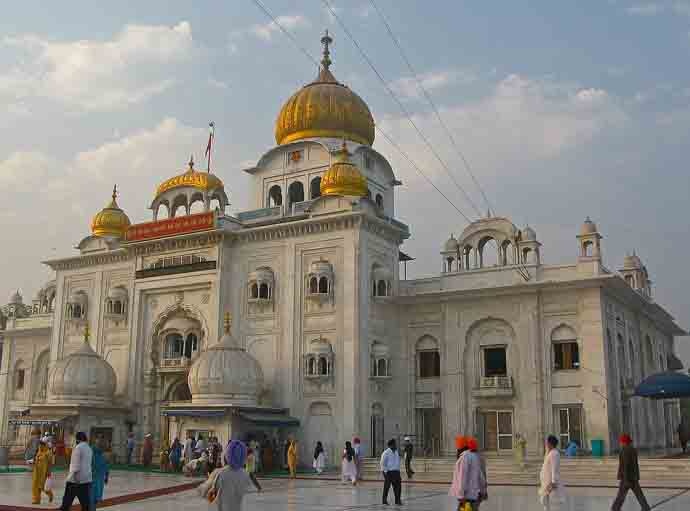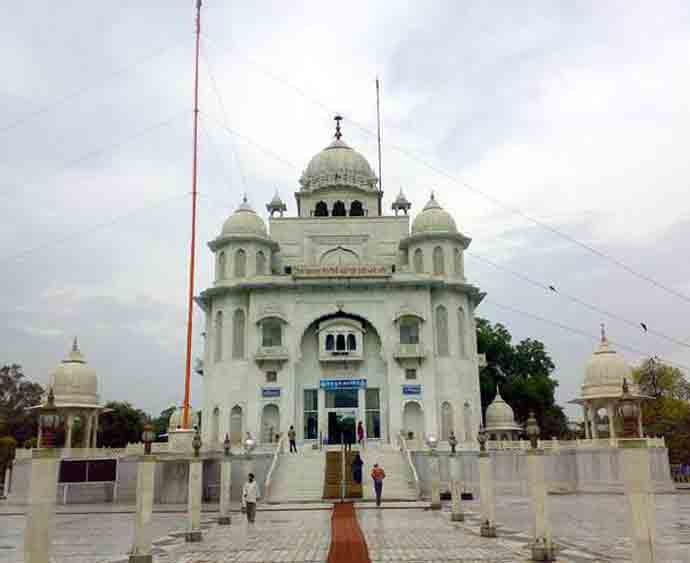How a baba-leader nexus is wiping out Sikh heritage

If I have to search for history at historic gurdwaras, I don't usually find it.
Forget distant history, even the recent past has been wiped out from Sikh sites in the name of kar sewa, a reconstruction spree carried out by babas for decades now.
Why go far in distance and time. Let's first talk about Delhi's most visited Bangla Sahib gurdwara, which once housed a beautiful school.

I still remember how children in uniform would walk into the sanctum in hordes and queue up for karah prashad — the blessed sweet pudding — after class, their bags piled at the main entryway.
But one fine day, the school was shut down for good, ostensibly to create more space for the faithful.
No decision-maker perhaps realised how big the loss was — a centre of education that built a gurdwara in hundreds of young hearts everyday was recklessly replaced with floors of marble and granite. Sigh!
Remember the park in front of the same shrine that commemorates the visit of Guru Har Krishan Sahib, the eighth guru, in 1664?
The stunning facade of the gurdwara is now blocked by a concrete structure with car parking beneath. The open green ground has vanished.
Inside the sacred building, the original white walls have been pasted with glittering films of gold. Ask successive managements to explain the rationale, they would be quick to cite "emotions" of the devotees to justify this flashy reconstruction in a faith that believes in "mann nivan, matt uchchi — simple living and high thinking". Quite an irony, indeed.
Let me now take you to a short tour of Punjab, the cradle of Sikhi.
In Fatehgarh Sahib district, the historic Thanda Burj was a tower where the then governor of Sirhind, Wazir Khan, confined the two younger sons and the mother of Guru Gobind Singh in the month of December, 1704.
They were detained in the unbearably cold burj as part of the Mughal persecution of the Guru's family.
Later, the children, aged seven and nine years, were martyred by being sealed alive in a wall where a gurdwara called Sri Fatehgarh Sahib now stands on the same sprawling compound.
But if you visit Thanda Burj now, you'll find the heritage tower is also turned into a cosy structure, except for its boundaries.
You don't get to see the original, bare floor where the Guru's sons spent cold nights in the lap of their elderly grandmother. It's covered with marble, a marble gurdwara building raised over it.
Realistically, the faithful are deprived the feel of the open-air castle linked to the most sublime sacrifices in Sikh history.
The Chamkaur Di Garhi in Ropar district has met the same fate. You don't spot the garhi or the fortress where Guru Gobind Singh and his troops were attacked by the coalition forces of the Mughals and the hill kings in 1704.
What you see there is the same standard design of a white-marble gurdwara.
The list of original architecture connected to Sikh history and erased in the past 35 years is long.
Most of this destruction, euphemistically called kar sewa or voluntary labour, has been commissioned by the religious committees to a variety of babas.
And most of these babas operate in a highly unorganised fashion. They have their tents dug up on the compounds of almost every historic shrine with donation boxes or bed sheets spread across to collect funds.
No receipts. No architectural plan explained scientifically. Just small plates of tin with 'kar sewa' printed on them to lure the faithful into shelling out money for some vague project.
But they don't set up without permission from the heads of gurdwara managements.
Some of them are even offered built-up accommodation within the historic complexes.
It goes without saying many of these kar-sewa babas are not professional architects. Their sense of history is limited to storytelling, with little or no understanding of the immense value of tangible heritage.
Backed to the hilt by Sikh religious administrations, they have unfortunately been able to demolish a lot of original Sikh heritage, exploiting religious sentiments.
This weekend was a bit different though. A group of Sikhs, including a lieutenant colonel, stopped the Delhi Sikh Gurdwara Management Committee (DSGMC) from inflicting a fresh round of damage to Sikh heritage.
Opposite Parliament house, a baba and his men, apparently authorised by DSGMC bosses, had punctured the courtyard of Sri Rakab Ganj Sahib for unexplained reasons.

Lt-Col Sukhvinder Singh Sodhi and other young and middle-aged devotees held a peaceful yet powerful sit-in right on the disfigured floor.
The baba retreated. And so did the DSGMC boss but not without issuing a sarcastic statement against the faithful, calling them "hud-dangi gangs", or hooligans, on Facebook.

But I salute this 'hud-dangi gang' for winning a battle against what I call is a scandalous desecration of holy places.
The war is yet to be won. And it can't be till the entire Sikh community, known for its charity, channels its emotion to conserving its heritage.
No historic architecture is any neta's fiefdom. No baba is sacred or qualified enough to tamper with it.
The Sikh community must sternly oppose reconstruction or renovation of historic gurdwaras for cosmetic reasons. If it doesn't, there will be nothing left to restore in the future because everything original would be lost.

